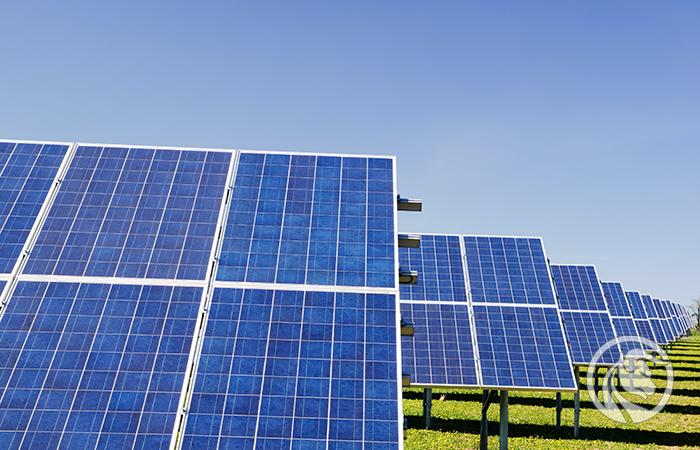Fueling the Energy Crisis - Saxo Forecasts for Q2022 XNUMX
Since the end of 2020, the Saxo strategic team has held the view that the real economy is too small to accommodate the financial and economic agendas of governments, central banks and green transition. On this basis, we forecasted an increase in inflation throughout 2021, which materialized in a sharp jump in the second half of this year and a 7% CPI reading in the United States in December. Overall, inflation has become a reality, but even after a major shift in rhetoric Fed at the end of 2021, the central bank lags far behind. It continues to slowly back out of history's easiest financial conditions despite the growing feeling that it is urgently needed. This feeling is likely to intensify even more if inflation does not decline as expected.
About the Author
Steen Jakobsen, Chief Economist and CIO Saxo Bank. Djoined Saxo in 2000. As a CIO, he focuses on developing asset allocation strategies and analyzing the overall macroeconomic and political situation. As head of the SaxoStrats team, Saxo Bank's internal team of experts, he is responsible for all research, including quarterly forecasts, and was the founder of Saxo Bank's outrageous forecasts. Before joining Saxo Bank he cooperated with Swiss Bank Corp, Citibank, Chase Manhattan, UBS and was the global head of trade, currency and options in Christiania (currently Nordea). Jakobsen's approach to trading and investing is thought-provoking and is not afraid to oppose consensus. This often causes debate among the global market community. Every day, Jakobsen and his team conduct research in various asset classes, covering major macroeconomic changes, market movements, political events and central bank policies. With over 30 years of experience, Jakobsen regularly appears as a guest at CNBC and Bloomberg News.
Jerome Powell on the rug
The White House appears to have called President Powell on the rug before his appointment for a second term. Biden's team has most likely made it clear that if the Powell Group wants to lead the Federal Reserve, it must focus on 150 million working Americans, whose wages are shrinking in real terms every month due to the Fed's inactivity on inflation, rather than focusing on maximizing accommodation to help the remaining 6 million unemployed find employment. Both Powell and Brainard (the new vice president) were forced to agree to these terms. At this point, the consensus is that the Fed will stop expanding its balance sheet until mid-March, hike interest rates by 75-100 basis points in 2022, and even begin reducing its oversized balance sheet with concurrent rate hikes earlier than previously anticipated. This is an extremely difficult task for a central bank, which since the time of President Greenspan and 1998 (LTCM) pursued a policy of lower interest rates for a longer period.
In this situation the tipping point for real economic growth is de facto energy crisiswhich we are witnessing - and which can only last due to decades of underinvestment in this area and the persistent lack of financing for fossil energy, which continues to make the largest contribution to energy production in our economy. This is what lies at the heart of our current topic - "The world is too small". In 2021, energy and electricity prices increased to an extent not recorded since the 70s. Electricity prices in Europe increased up to ten times above their long-term average, partly due to disruptions in foreign supply, but also due to a lack of baseload as Germany closes power plants nuclear power and new alternative energy sources cannot provide a critical base load.
In short, we have created a monster in the form of a situation where the political priority - green transformation - drives the energy crisis. The longer we operate without a viable plan to secure a seamless path towards future green energy, which has so high hopes, the longer our economies will remain in a chaotic state due to an inadequate baseload, while energy demand, known for its inflexibility, exceeds there will be production potential.
The policy response to date has been to become even more committed to green energy and to ignore the required grid and transmission upgrades as well as better use of conventional energy. The biggest offense on the part of politicians is their inability to admit that alternative energy alone will not be able to provide current living standards in the future. The world now needs the Manhattan 2.0 Project - but this time not to build an even bigger bomb, but to discover and use new low-carbon, high-density energy sources, most likely based on nuclear fission and nuclear fusion.
Electric cars are not enough
The irony of a devoutly pursued plan for even greater commitment to the present Green Agenda is that as long as China, India and Russia account for 50% of the world's electricity consumption, 70% of which is coal-based, the number of electric cars on the roads and Europe's green transformation will have little or no impact. If, on the other hand, we develop a new Manhattan Project aimed at cheaper - not more expensive - energy, we will be able to return to the path of ecological, sustainable development and economic growth.
We believe that in 2022 the energy crisis will transform the definition of ecology by restoring fossil energy until we are able to implement the appropriate innovations to use better energy sources. Both electric cars powered by road wind energy and high-emission coal are a dead end in the fight against climate change. A real revolution in 2022 will start building our energy future based on realities, not fantasy.






















![Forex Club – Tax 9 – Settle tax on a foreign broker [Download the Application] Forex Club - Tax 9](https://forexclub.pl/wp-content/uploads/2024/02/Forex-Club-Podatek-9-184x120.jpg?v=1709046278)
![Trading View platform – solutions tailored to the needs of traders [Review] trading view review](https://forexclub.pl/wp-content/uploads/2024/03/trading-view-recenzja-184x120.jpg?v=1709558918)
![How to connect your FP Markets account to the Trading View platform [Guide] fp markets trading view](https://forexclub.pl/wp-content/uploads/2024/02/fp-markets-trading-view-184x120.jpg?v=1708677291)
![How to invest in ChatGPT and AI? Stocks and ETFs [Guide] how to invest in chatgpt and artificial intelligence](https://forexclub.pl/wp-content/uploads/2023/02/jak-inwestowac-w-chatgpt-i-sztuczna-inteligencje-184x120.jpg?v=1676364263)


![WeWork – the anatomy of the collapse of a company valued at $47 billion [WeWork, part II] wework bankruptcy story](https://forexclub.pl/wp-content/uploads/2024/04/wework-bankructwo-historia-184x120.jpg?v=1711729561)
![Adam Neumann – the man who screwed up Softbank [WeWork, part AND] adam neumann wework](https://forexclub.pl/wp-content/uploads/2024/04/adam-neumann-wework-184x120.jpg?v=1711728724)





![How to transfer shares to another brokerage office [Procedure description] how to transfer shares to another brokerage house](https://forexclub.pl/wp-content/uploads/2024/03/jak-przeniesc-akcje-do-innego-biura-maklerskiego-184x120.jpg?v=1709556924)

![The most common mistakes of a beginner trader - Mr Yogi [VIDEO] Scalping - The most common mistakes of a beginner trader - VIDEO](https://forexclub.pl/wp-content/uploads/2024/03/Scalping-Najczestsze-bledy-poczatkujacego-tradera-VIDEO-184x120.jpg?v=1711601376)
![Learning patience: No position is also a position - Mr Yogi [VIDEO] Scalping - Learning patience - No position is also a position - VIDEO](https://forexclub.pl/wp-content/uploads/2024/03/Scalping-Nauka-cierpliwosci-Brak-pozycji-to-tez-pozycja-VIDEO-184x120.jpg?v=1710999249)
![When to exit a position and how to minimize losses - Mr Yogi [VIDEO] Scalping - When to exit a position and how to minimize losses - VIDEO](https://forexclub.pl/wp-content/uploads/2024/03/Scalping-Kiedy-wyjsc-z-pozycji-i-jak-minimalizowac-straty-VIDEO-184x120.jpg?v=1710336731)


















